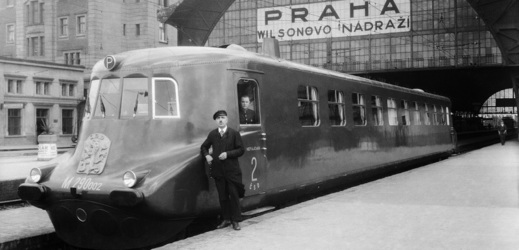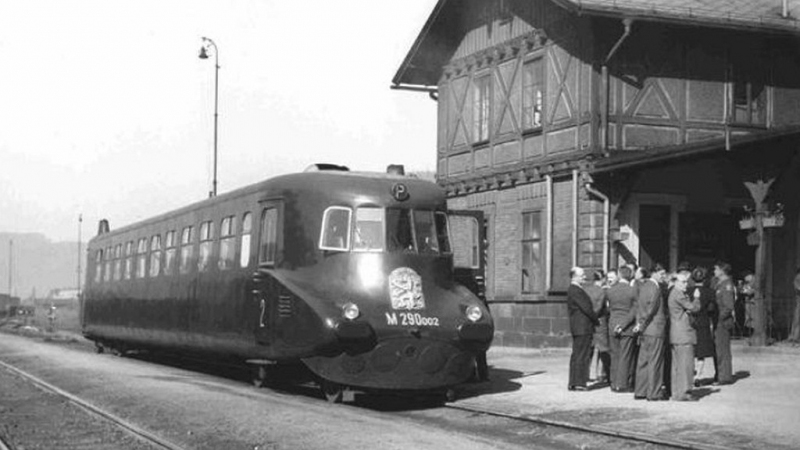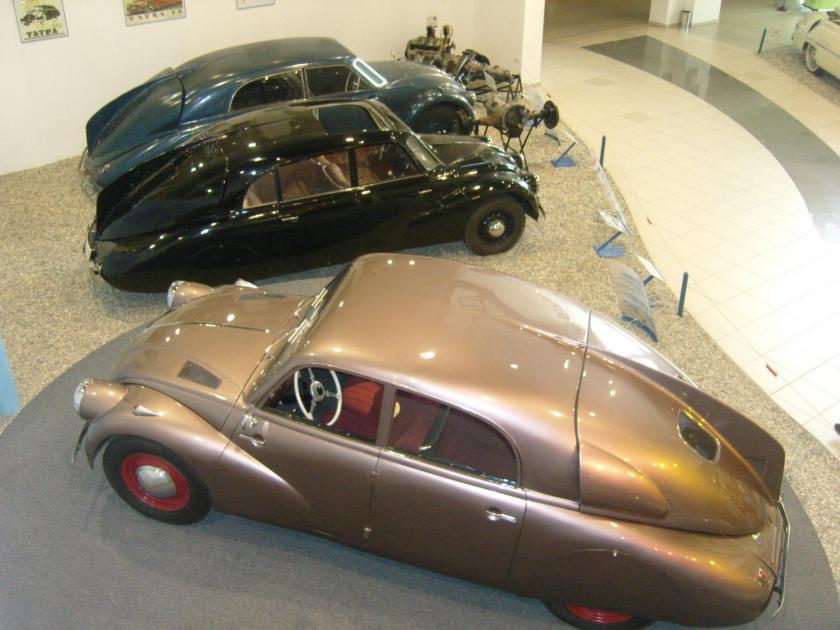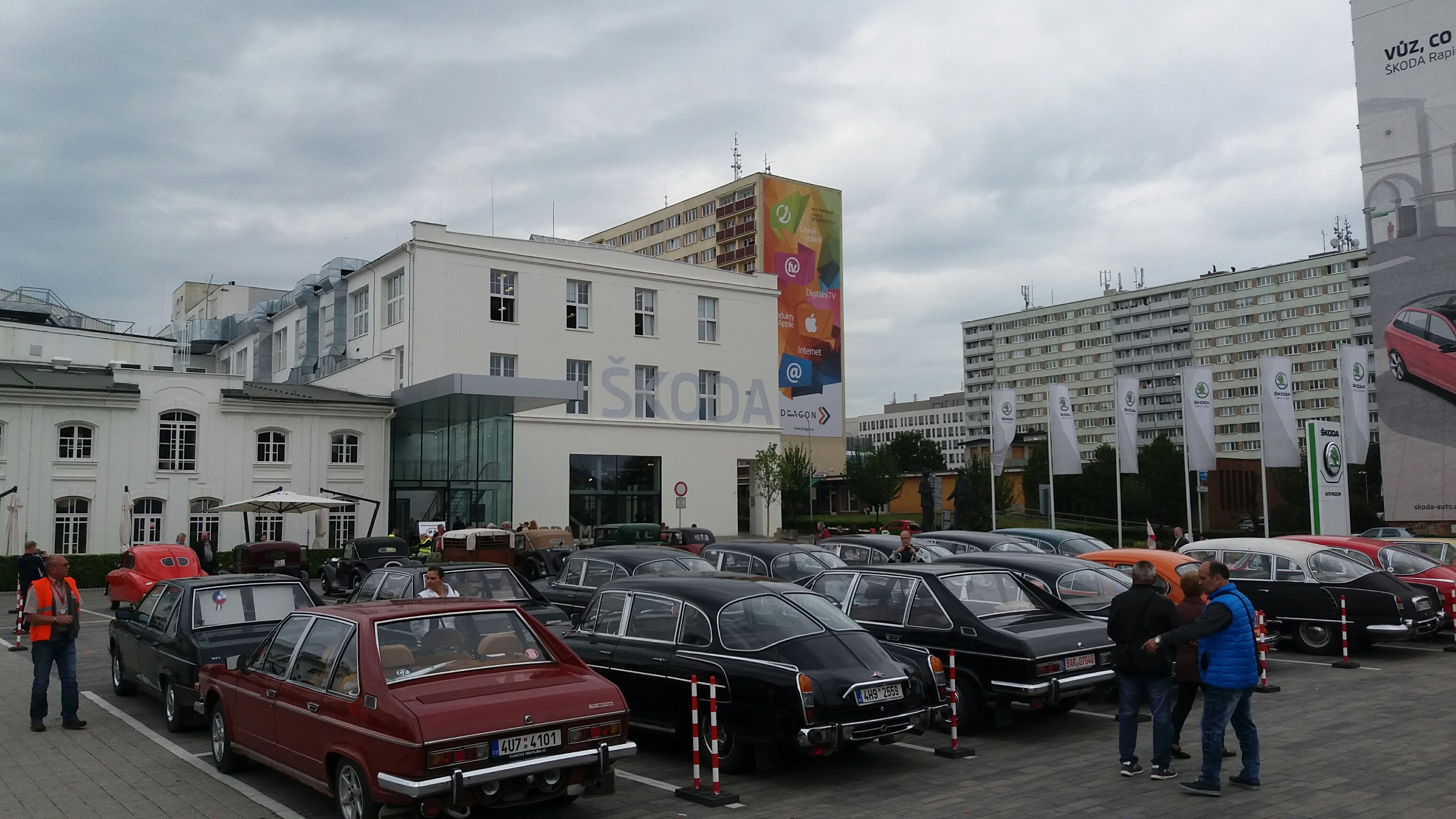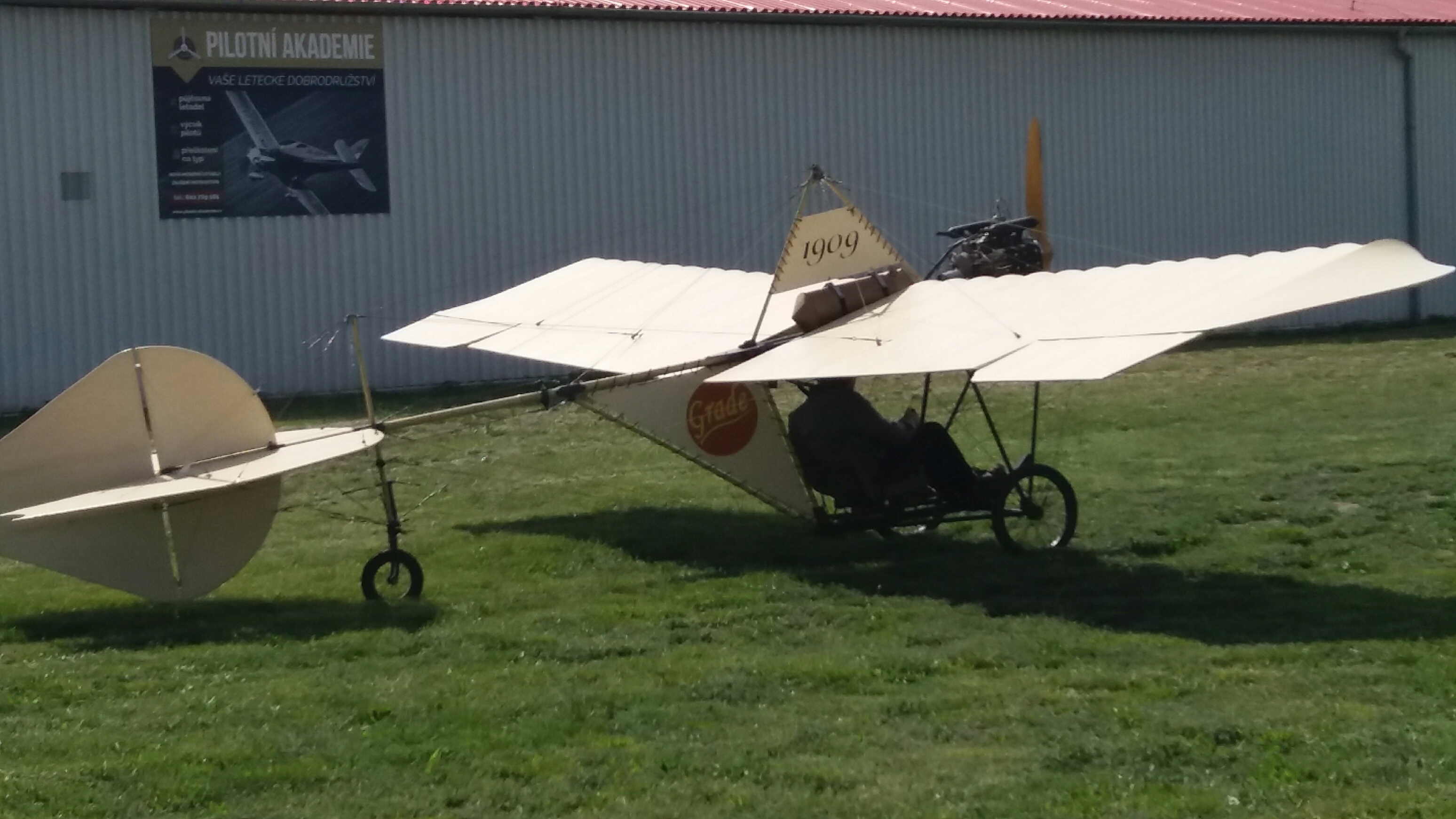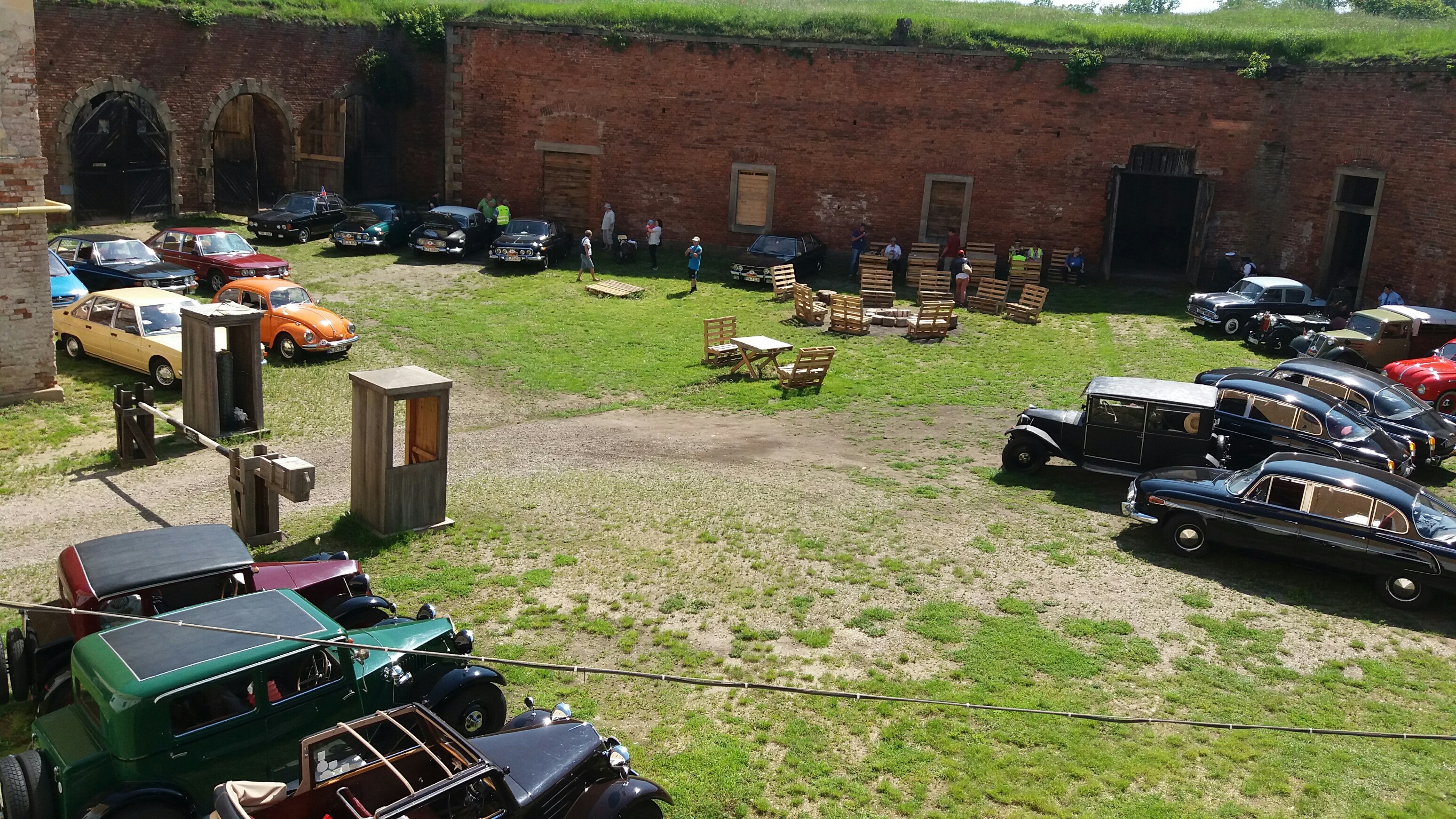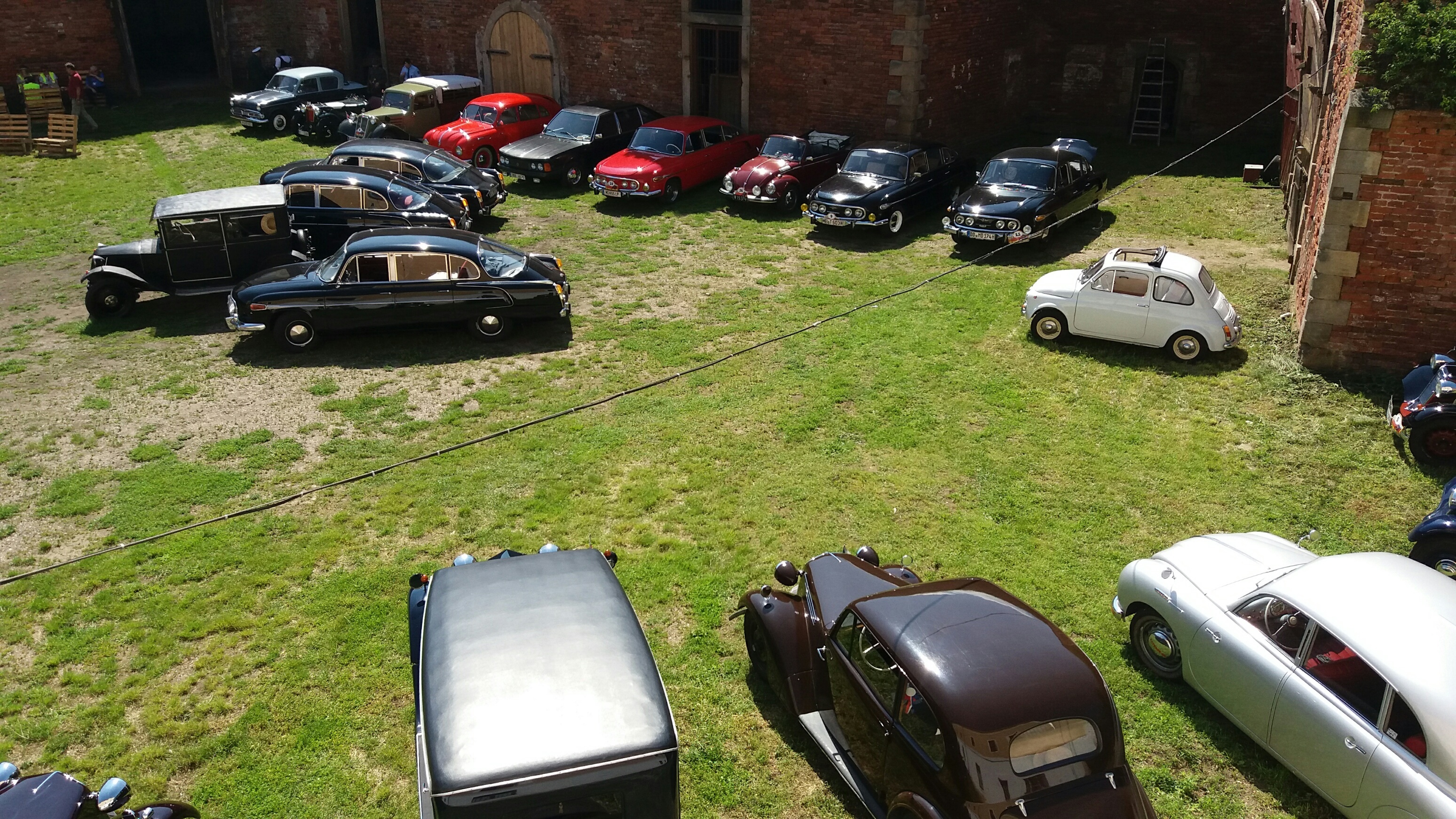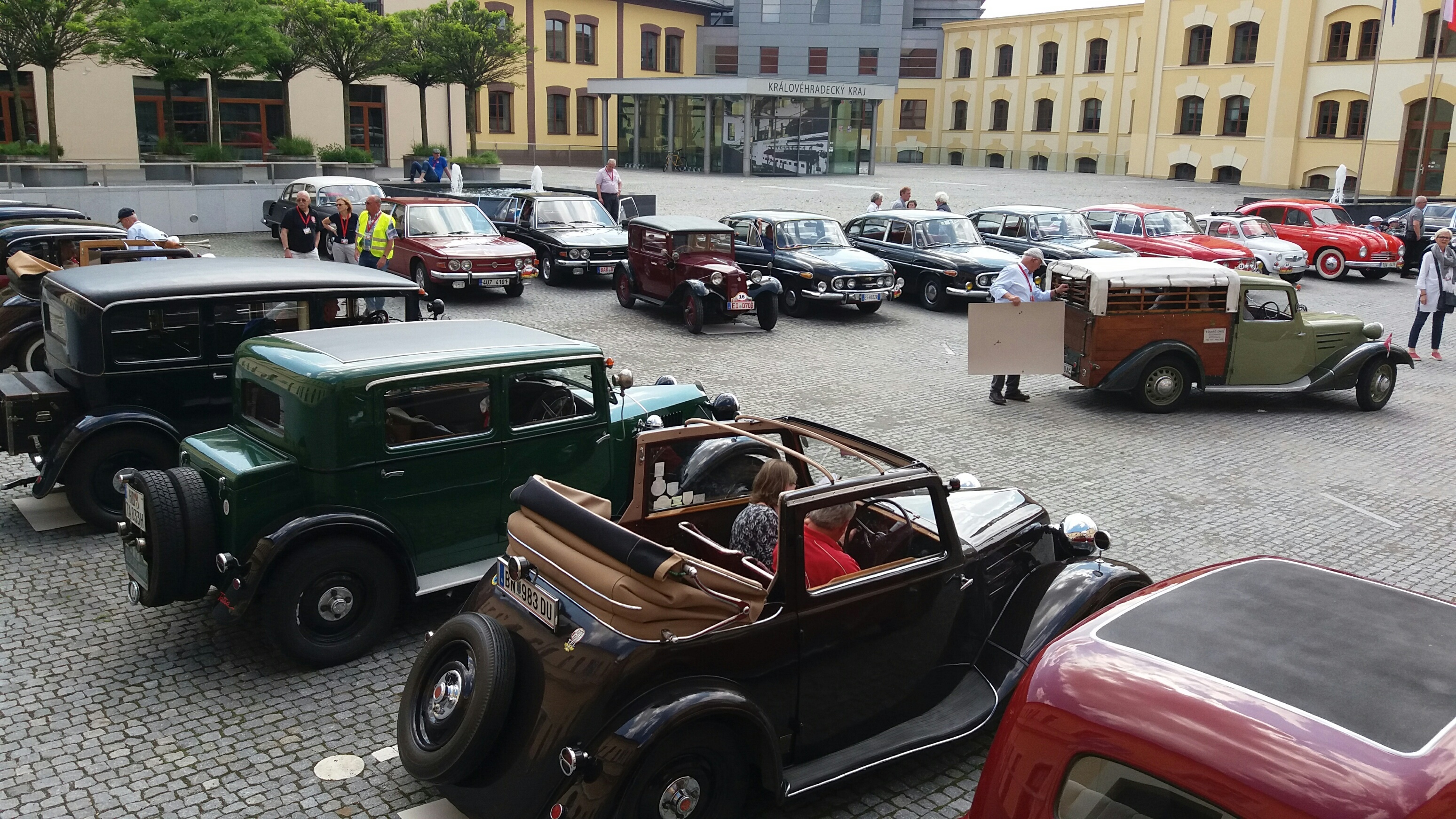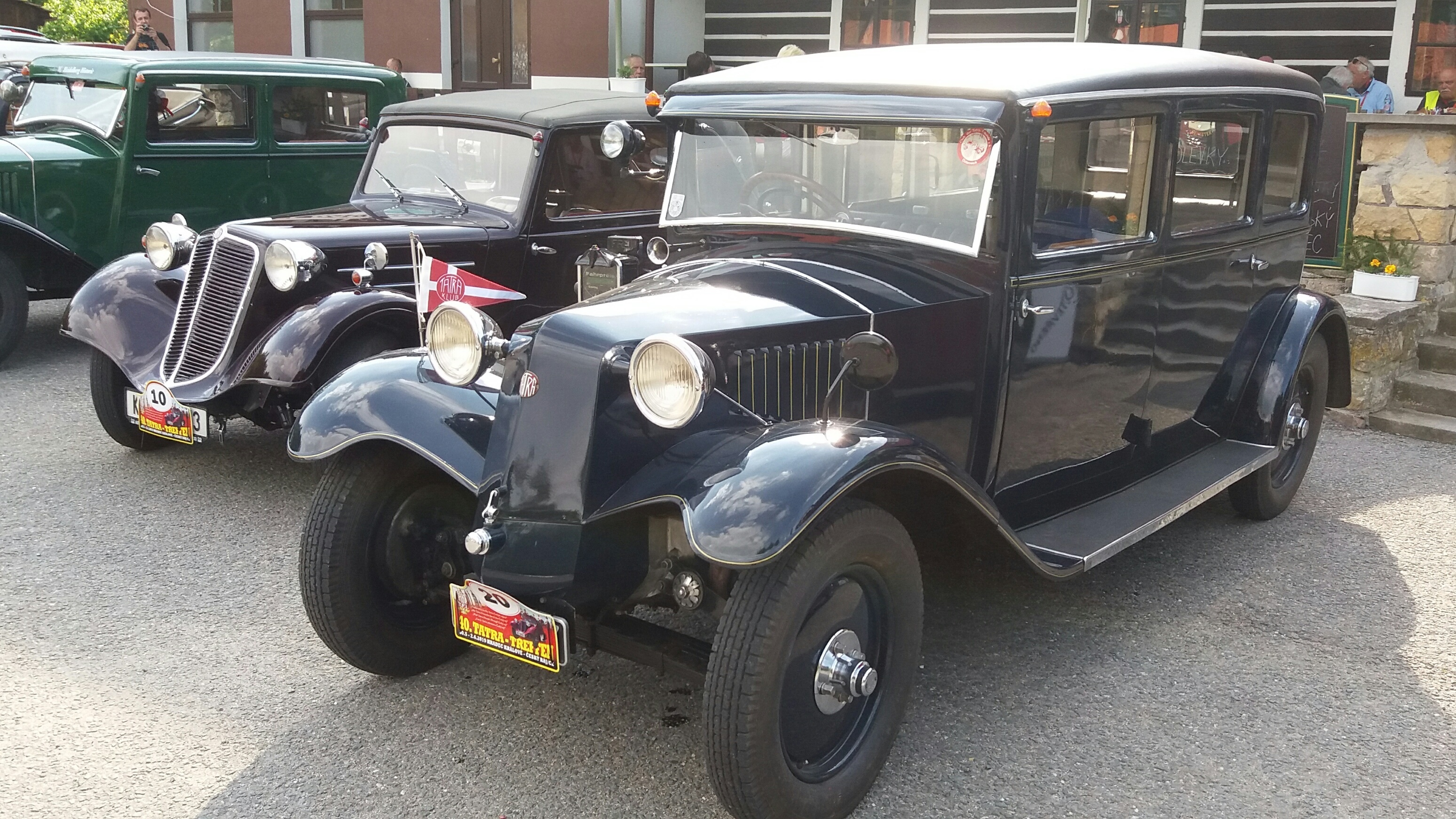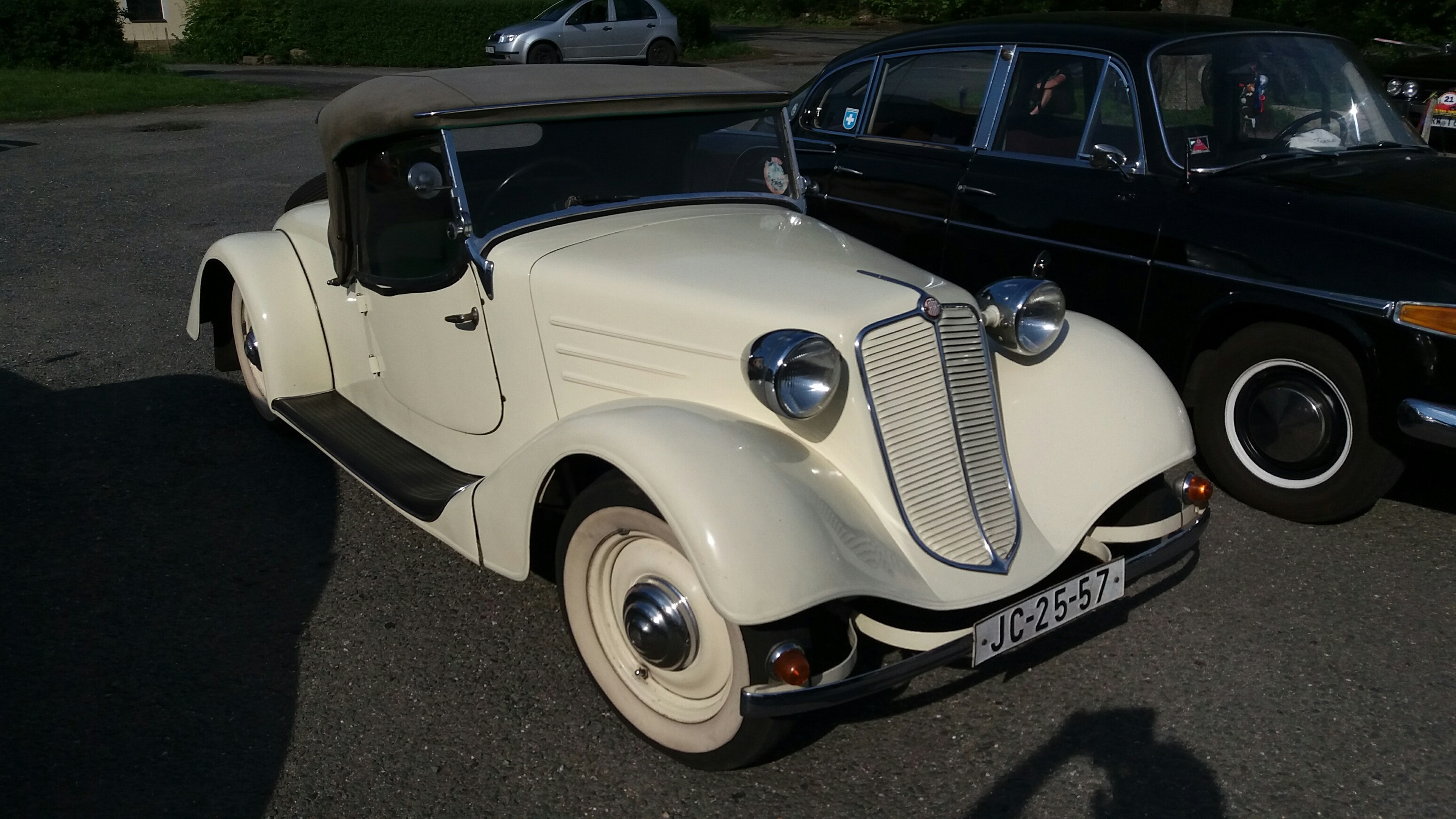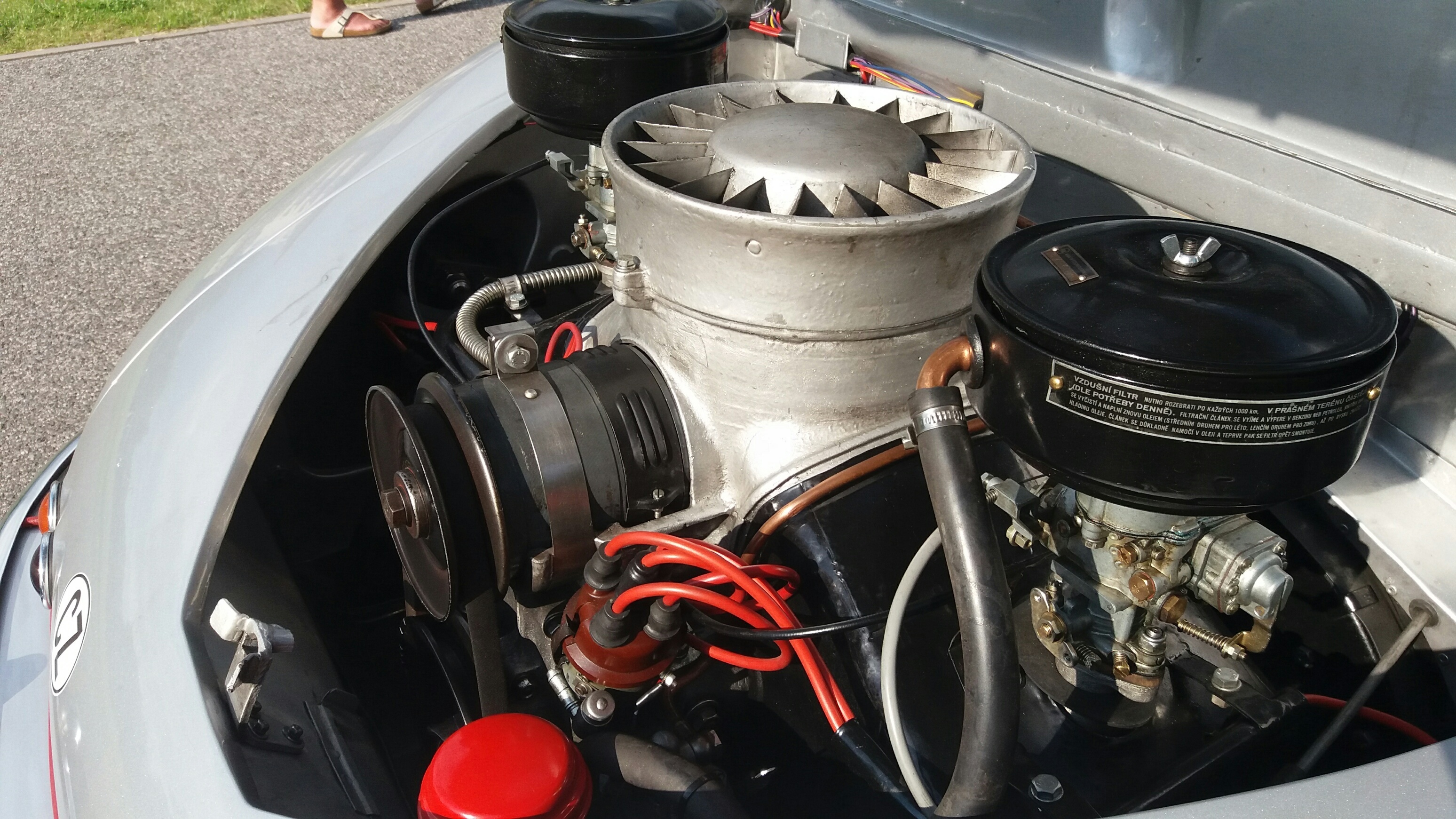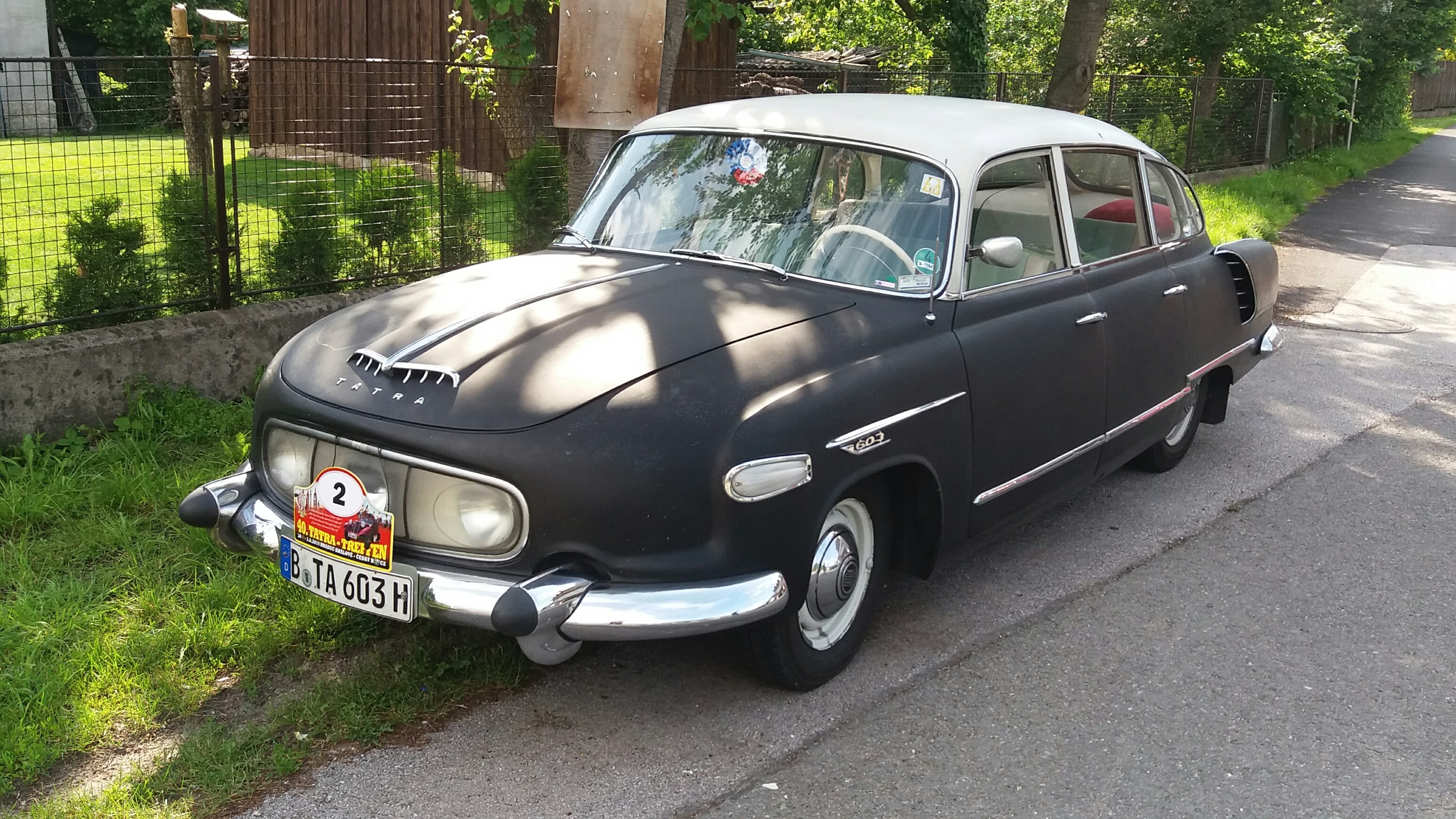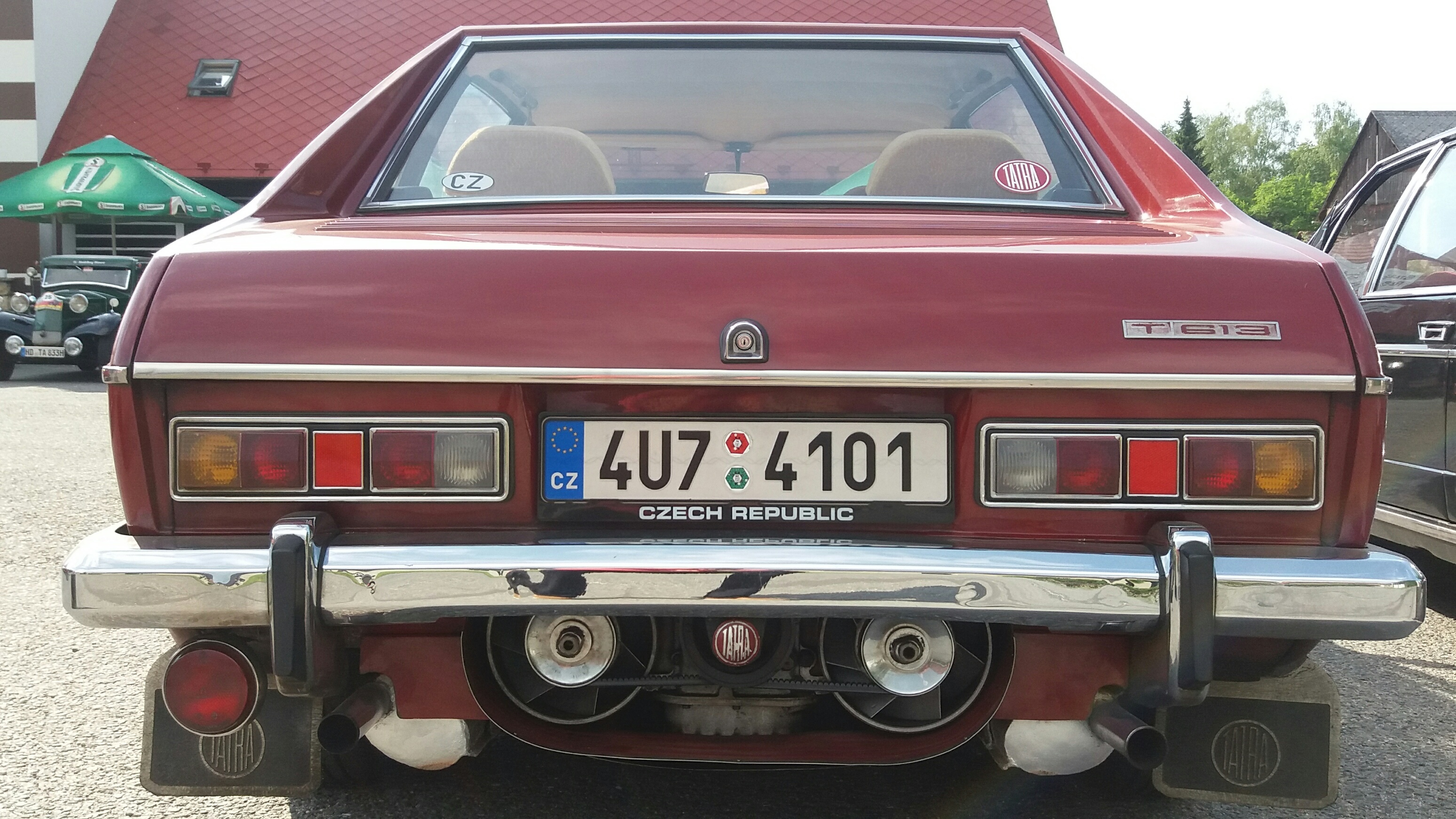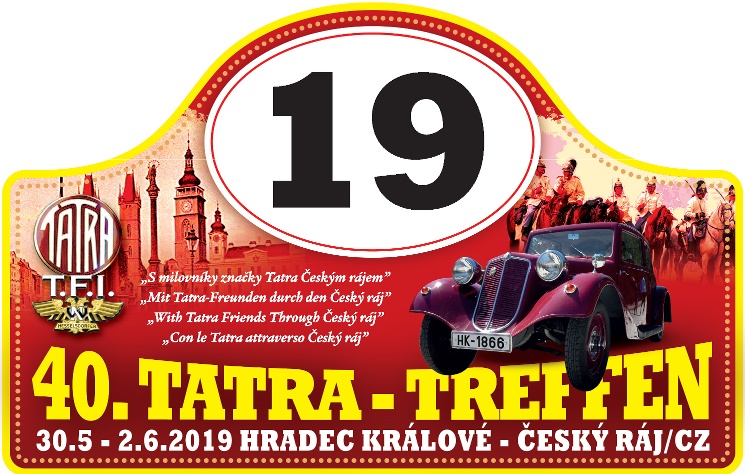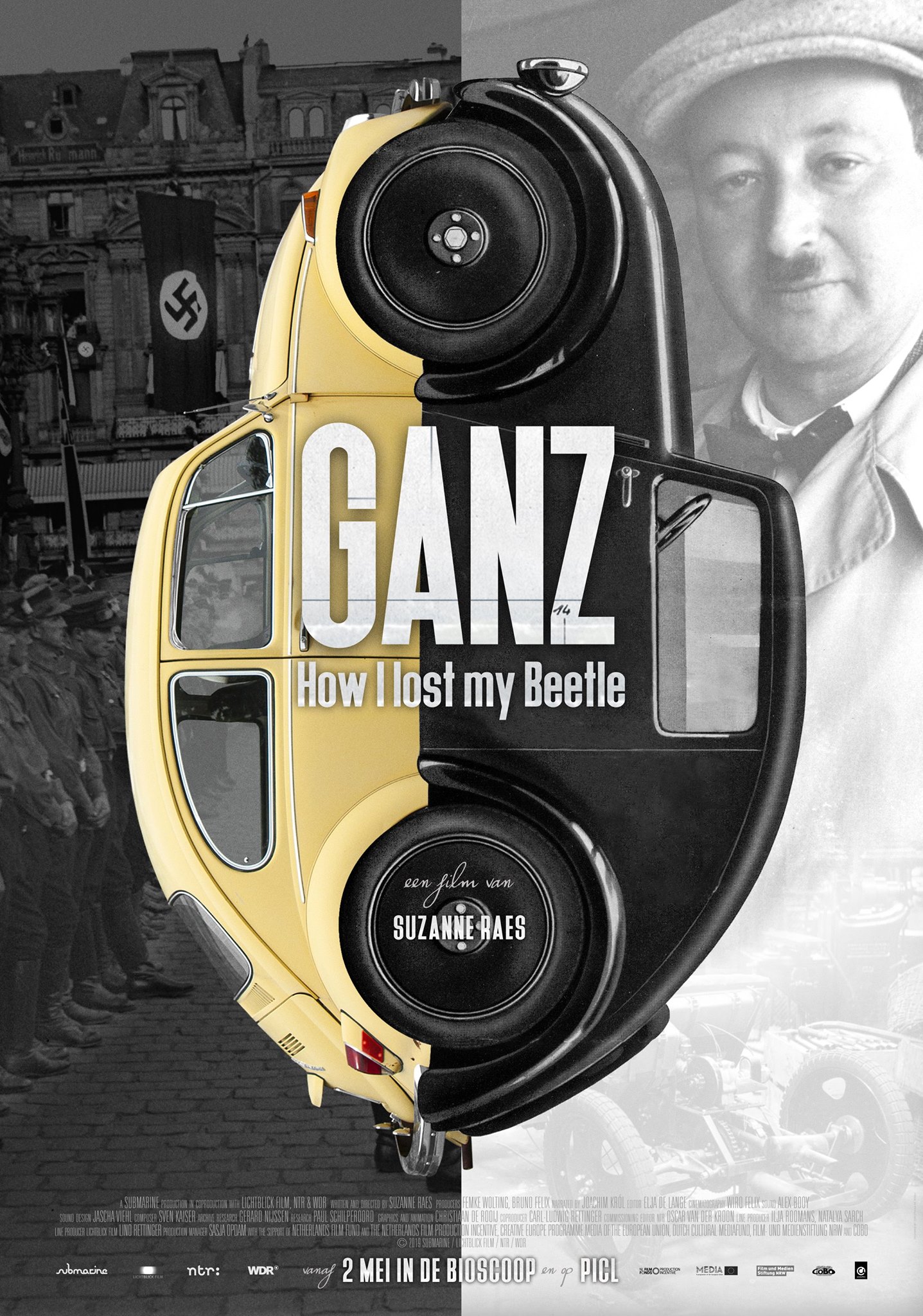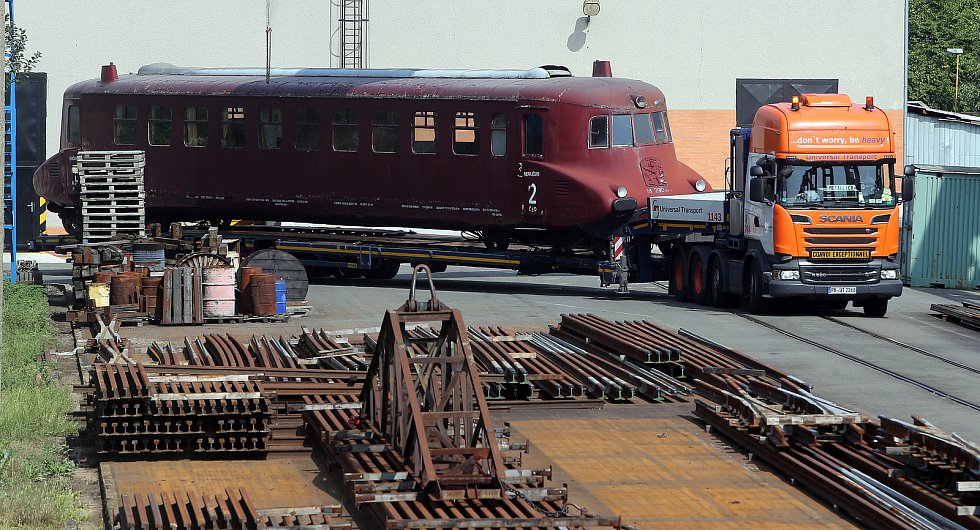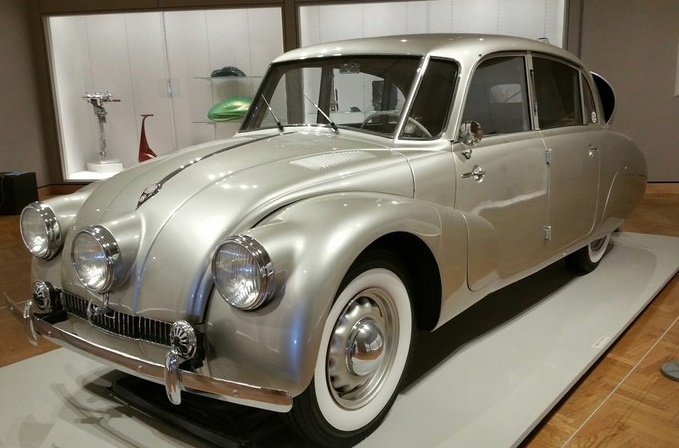Background story: https://www.autoforum.cz/fascinace/nejslavnejsi-cesky-vlak-stvoril-vyrobce-aut-vyjimecny-stroj-se-az-ted-dockal-zachrany/
Strela restauration Video
A visit to Porsche and Tatra museums
TFI Hradec Králové Tatra Rally Report
The Tatra Freunde International organzied a rally in Czech Republic this year. Start and finish were in the spa resort Tree of Life in Lázně Bělohra, near Hradec Králové, in Northern Bohemia.
All competitors arrived safely on Thursday, May 30th.The next day we set off for Mlada Boleslav and vistited both the Skoda Museum and the Skoda works where we could witness its car production.
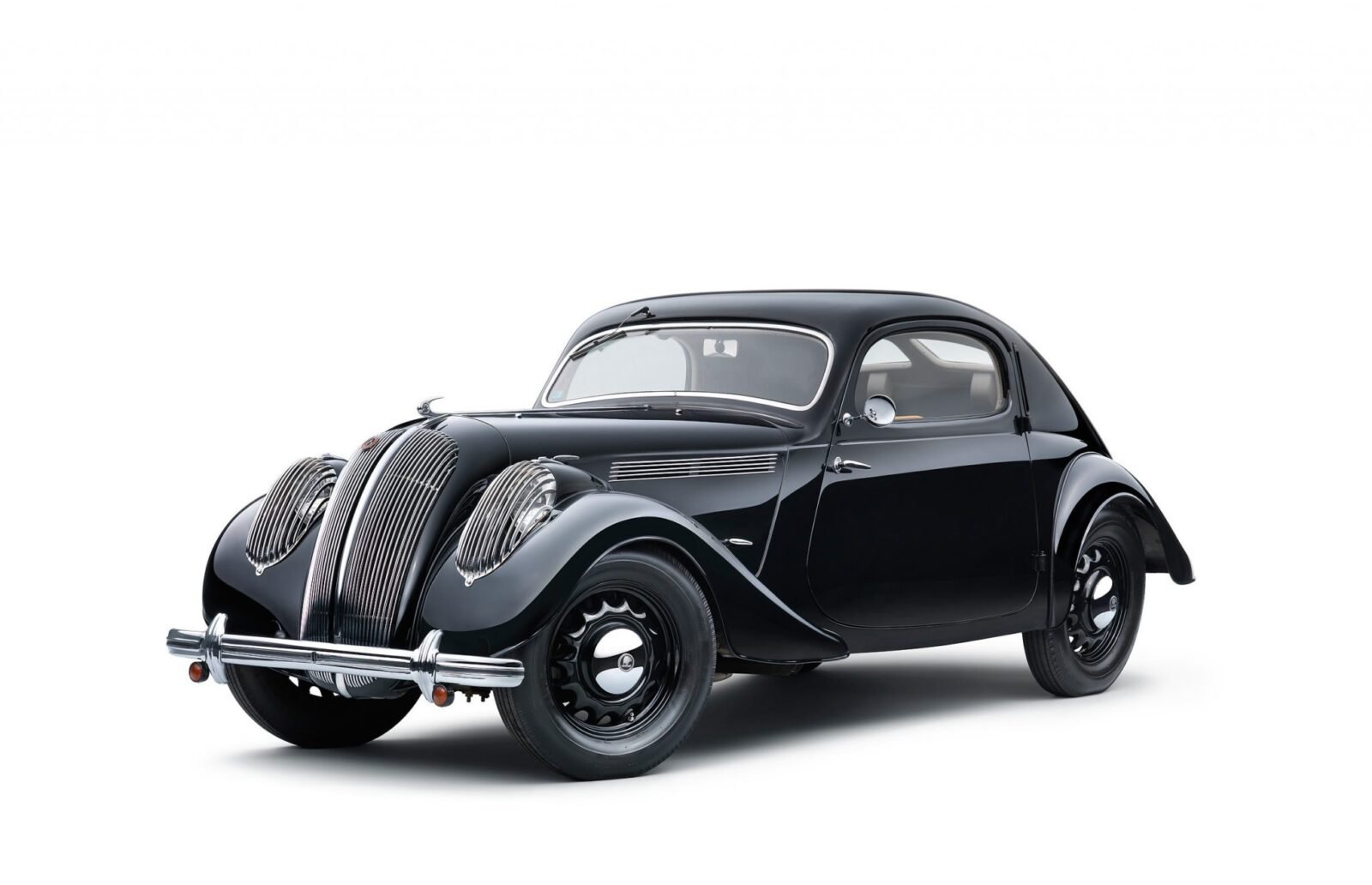
A little bit hidden, on the top floor of Skoda Museum, amid sculptures presenting Czechoslovak history, there was a surprising Hanzelka Zikmund sculpture, presenting Czech adventurism.
From the Skoda car museum we went to the Metodej Vlach aircraft museum with several nice aircraft, though my personal highlight was to see a 1909 Grade aircraft taking off, flying, landing and taxiing.
Full collection: http://www.letecke-muzeum-metodeje-vlacha.cz/exponaty/letadla-letuschopna/
On saturday, June 1st, we continued to Josefov Fortress (Czech: Pevnost Josefov, German: Josefstadt or Josephstadt), a large historic defence complex of 18th-century military architecture, built between 1780-1790, in Jaroměř, eastern Bohemia. Website: https://en.wikipedia.org/wiki/Josefov_Fortress
Lunch was used in the centre of Hradec Kralove after which a small sightseeing trip through the centre by steamboat and tourist train was offered.
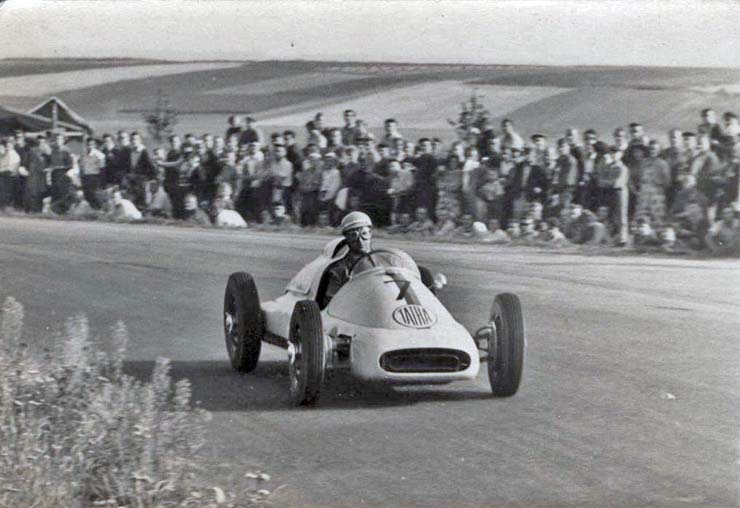
Returning to Lázně Bělohra, we used part of the track of the road race circuit where between 1952 anf 1976 the international Prachovské Skály races were held. Though known from its motorcycle races, the Tatra works team competed here succesfully in the early ‘fifties with T 607s (Alois Mark on the photo) In the ’sixties Tatra Delphins competed in the Formula Junior class here.
We further visited the battleground of the famous 1866 battle between Prussians and Austrians and a sculpture park before returning to Lázně Bělohra.
Over thirty Tatras competed. One T 12, two T 54s, several T57s of the models a and b, a T 75, two Tatraplans, 9 T 603s, one T 603 powered T613, four T 613s and several TFI members with private transport or other classics.
Next year’s TFI event will be held in Eastern Austria.
For more pix, please visit the Facebook Page of Tatra Freunde International. https://www.facebook.com/search/top/?q=Tatra%20freunde%20international&epa=SEARCH_BOX
How I lost my Beetle. A documentary
Last sunday, the “How I lost my beetle” Josef Ganz documentary debuted at the Louwman Museum in the Hague. https://josefganz.org/documentary-release-ganz-how-i-lost-my-beetle/ Video (Trailer) https://youtu.be/6W5ZbDN9df4 Unlike Schilperoord’s publications on the Ganz-VW priority battle, the documentary solely tells the personal story about Ganz’ (controversial) claim loosing his designs to the Nazis. A technical comparison between Ganz’ designs and the VW beetle isn’t part of the documentary. The documentary however pays attention to the restoration of an early Standard Superior, found in the former GDR. The absence of a technical discussion puts the documentary regrettably in a victim famework. It is the Nazis against Ganz. Herbie versus the Shoa as the documentary producer put it.
Video: Veteran Arena Olomouc enlarged
Australian Skoda and Tatra Museum on its way
30 min. video: The Slovenska Strela under restauration. English subtitles.
Crazy Cool Cars from the Best Minneapolis Museums. Picasso, Pontiac, Prince, and a Tatra
T77a Nonsense by Jalopnik
About a month ago, I went on vacation in Prague and paid a visit to the very lovely National Technical Museum. It’s awesome and definitely worth a visit. Because if you do go, you’ll see a sleek, silver 1937 Tatra 77a parked on the ground floor, which I later learned was actually shockingly good at killing Nazis during World War II. Here’s why.
In 1934, Czech vehicle manufacturer Tatra—a company led by legendary engineer Hans Ledwinka—launched the first serially produced, aerodynamically designed car called the T77. It was streamlined and sleek, with a body shaped in a wind tunnel and a freaking fin on its back, like some glossy fish car from the future. It was partly designed by Paul Jaray, the engineer behind the aerodynamics of the Zeppelin.
The Ten Greatest Engine Designers In Automotive History
Geniuses like Nikolaus Otto and Rudolf Diesel came up with the bases of internal combustion and…
Since the T77 needed to be as aerodynamic as possible, Tatra minimized the T77’s front face area and stuck the engine—a 2.97-liter air-cooled V8, good for 59 horsepower—in the back, right above the rear axle. This allowed the car to reach speeds of 90 mph, which were considered extremely fast in those pre-war days.
In 1935, the T77 was improved to create its successor, the 77a. The displacement of the V8 was increased to 3.4 liters and power jumped to 70 HP, with a top speed of 93 mph. The cars were among the most advanced and high-tech of their time.
Underneath their flashy hides, the T77 and 77a both had four-wheel independent suspension that used swing axles in the back and a transverse leaf spring system in the front, writes Hemmings.
Stunning as they were to look at, though, the T77 and the 77a were harrowing to drive. Thanks to an extreme rear weight bias and long wheelbase, the T77 and 77a were said to have acutely twitchy handling. It would be altogether too simple to overcook a corner and have the heavy ass swing out into dangerous oversteer. Tire technology from the 1930s probably didn’t do it any favors, either.
The German occupation of Czechoslovakia lasted from 1938 to 1945. The stylish and fast Tatras were very appealing to the Nazis and rose in popularity with high-ranking SS officers, British writer Steve Cole told the Telegraph. And you can totally see why: When you bully your way into a country, you want to take the nicest shit for yourself. Textbook invaders, the lot of them.
Trouble rose when those Nazi officers tried to go fast in their new cars, though. A bunch of them kept crashing and dying.
Per Cole:
“These high-ranking Nazi officers drove this car fast but unfortunately the handling was rubbish, so at a sharp turn they would lose control, spin out and wrap themselves round a tree killing the driver more often than not. The Allies referred to the Tatra cars as their secret weapon against the Nazis.
“More high-ranking Nazi officers were killed in car crashes in the Tatra 77 [and 87] than were killed in active combat. It goes to show that being too flashy doesn’t get you anywhere and will leave you dead.”
Savage, but probably not something the Czechoslovakians were too broken up about.
Eventually, though, Tatra was able to improve the handling of the 77a’s successor, the T87. Its engineers shortened the wheelbase by 12 inches and cast its engine from a lightweight alloy, according to Hemmings. The resulting car was nearly 900 pounds lighter than the outgoing model.
The National Technical Museum’s placard beside the 77a doesn’t mention any of its Nazi-killing prowess, but now you know and you can impress your friends and relatives the next time you pay it a visit.
Slovak arrow under renovation
